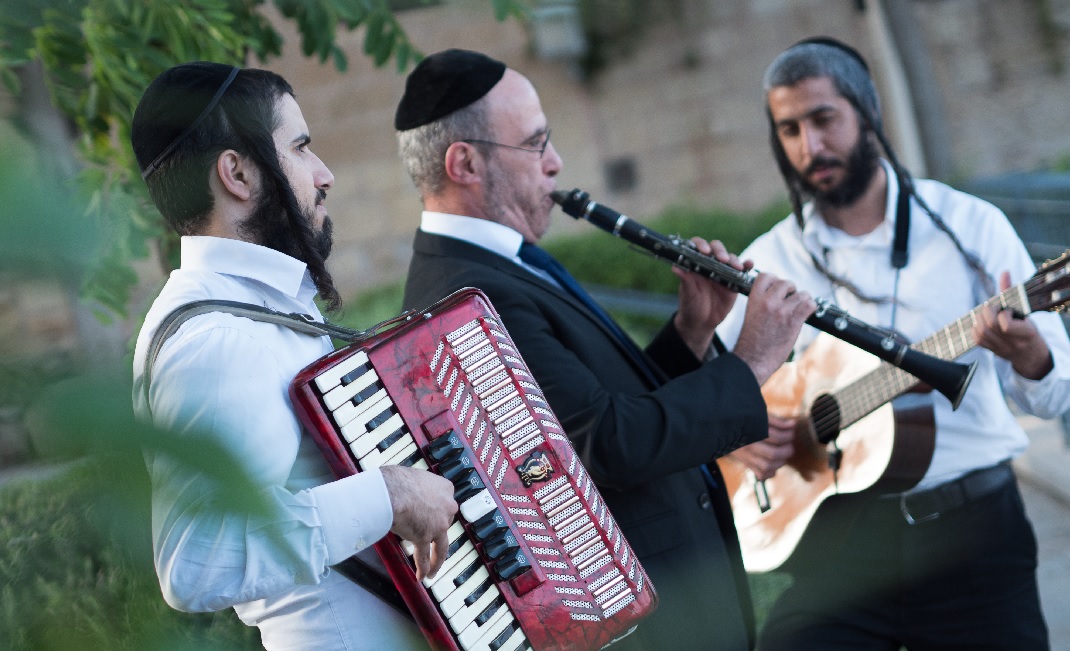Rabi Shimon’s Serenade

These musicians haven’t slept all night and don’t get a shekel for their efforts but it’s one concert they’ll never miss

They’re up on the bandstand playing their hearts out but this is no ordinary show. In Meron on Lag B’omer the music is but a backdrop fusing with the intense prayer supplication and joy of the thousands who come to bask in Rashbi’s blessings. These players haven’t slept all night and don’t get a shekel for their efforts but it’s one concert they’ll never miss.
It’s 2:30 a.m. and you’ve just alighted from the bus that dropped you off somewhere on the main road at the bottom of Kfar Meron. Anyone who’s been to Meron on Lag B’omer can surely relate: It’s that initial feeling of bewilderment, disorientation, and confusion, attempting to figure out which way the arrows are pointing while trying not to get squashed by the throngs who are all maneuvering in the same direction.
You finally get your bearings as you start the climb up the mountain — but the noise! On your left is a booth where you can write a letter to the Lubavitcher Rebbe — you can’t miss it because of the blaring loudspeaker and the accompanying inspirational video; a little further on are men with bullhorns trying to entice you to buy a set of Zohar; and on your right are an infinite-energy bunch of Na-Nach break-dancers gyrating on the roof of their high-decibel van. Next to them is the Hatzolah lost-and-found station, announcing the names of lost children and frantic parents. You encounter one stand after another, each one blasting odes to Rabi Shimon bar Yochai, while you dodge the multiple hands plying you with cups of grape juice and bags of shoko as thousands of Hashem’s petitioners have brought chai rotel (52 liters) of drink as a segulah for their personal salvations.
The cacophony is beginning to give you a migraine.
But still you make your way up the incline, keeping your eye on the goal and wondering if you’ll ever actually reach the tziyun — the outer courtyard and structure atop and around the ancient holy grave of Rashbi. It pulls you like a magnet… and suddenly you hear it. Not the shouting from the booths below competing for the attention of multitudes of pilgrims, not the blaring music of the Na-Nachs or the Zohar sellers, but the strains of something ethereal yet joyous, rising on the wind from atop Mount Meron until the heavens.
Somehow you’ve managed to get pulled into the courtyard, where the embers of the hadlakahs are still glowing and the crowd seems to be spinning in a never-ending twirl of ecstasy in celebration of the great light Rabi Shimon revealed to the world on his deathbed nearly 1,900 years ago — as daylight was suspended while he completed his teachings of the Hidden Torah that would become the domain of all the Jewish People.

And the music — Meron music — is so different from the electronic techno sounds you’re used to at simchahs back home. The clarinet in the lead, with the keyboard, fiddle, and drums in graceful accompaniment, seem to penetrate that deep place in the soul that makes a Yid want to dance faster, jump higher, reach for something he knows is real yet untouchable.
You look at your watch: 3:30 a.m.
Suddenly the dancing morphs from a noisy spin to a silent sway, as the soulful sound of the clarinet pierces the air with a different kind of niggun: for the next two hours, until haneitz, you hear Karlin’s “Kah Echsof,” the Baal HaTanya’s “Arba Bavos,” and the pre-sunrise finale, “Tiher Rabi Yishmael.” These hours belong to master clarinetist Chaim Kirshenbaum, who hasn’t missed a predawn rendezvous with Rabi Shimon in 29 years.
Oops! We could not locate your form.












